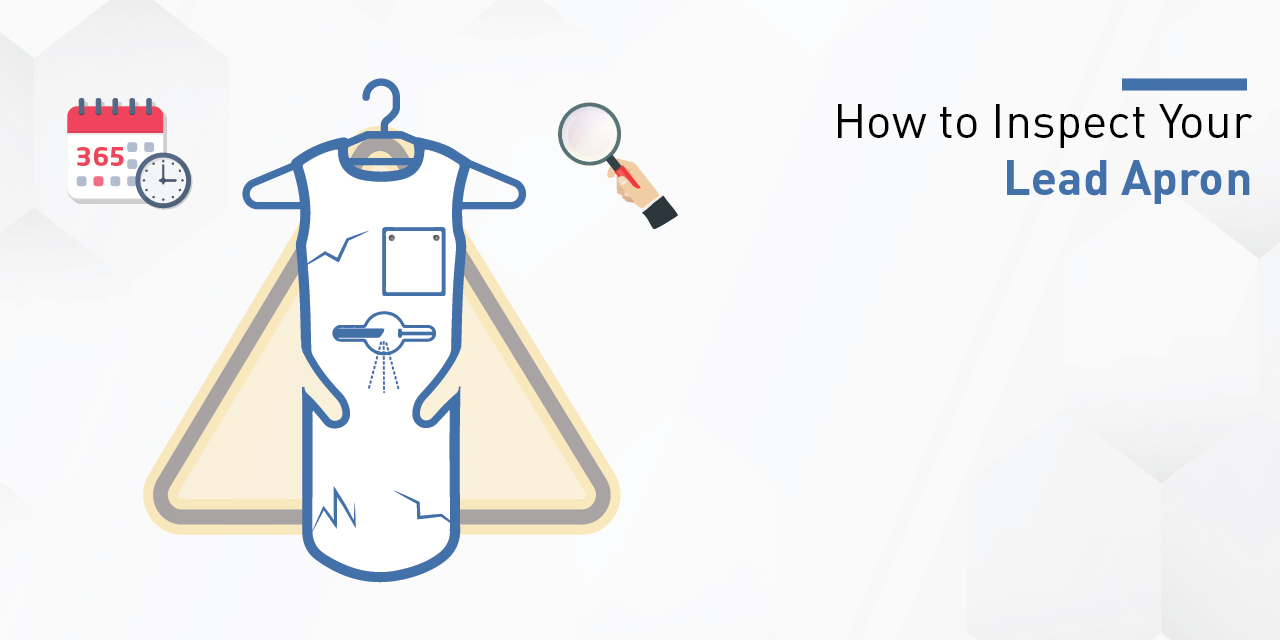Did you know that after regular use of lead aprons they can crack and become susceptible to holes? After day-to-day use, underneath the layer of the fabric, the sheets of lead or composite material can crack and split leaving the user vulnerable to radiation. Cracking usually happens when aprons aren’t stored correctly and they can also occur over time in an immaculately cared apron. Read on to know more about the tips that can help you check for any defects or holes in your apron.
In the radiology department and various healthcare settings, lead radiation protection aprons are worn by personnel who work with radiation equipment to protect themselves from harmful radiation which they daily encounter. It is critical to carry out a routine inspection of such aprons for any damage to comply with the requirements of state X-ray boards and other healthcare regulating organizations.
Typically, lead aprons are evaluated based on the policies and procedures outlined by the facilities. Many facilities advise getting protective lead aprons checked for any defects like holes, cracks, or tears or its inefficacy at least once a year. Some facilities may perform a survey on their lead aprons frequently such as twice a year, especially if the aprons are used more often.
In this article, you can explore the ways by which the inspection of protective lead aprons can be made throughout the industry to ensure the safety of both the healthcare provider and their patients.
What methods can be employed to fully inspect lead radiation protection aprons?
Here is a series of different types of inspection methods to routinely check out protective lead aprons along with a rundown as to how they are done. If the apron passes initial testing it can be returned to service as it is probably considered to be in pretty good shape. However, if there is any suspicion, the apron is further inspected radiographically. A record of these inspections must be maintained.
-
- Visual inspection: As the name suggests, this type of inspection involves looking for defects in the apron that can be noticed with the naked eye. In this approach, the lead apron is first laid out on a clean, flat surface. Next, its seams and all inner and outer covers are visually checked for any visible damage like any tears, imperfections (such as bumps), or perforations that may warrant further inspection. Moreover, any fastening devices of apron or apron closures (like buckles, Velcro, etc.) are confirmed to be in good shape and properly working.
-
- Tactile inspection: In this type of inspection, using hands the entire apron surface is touched to feel for any thinning of the lead or creases, cracks, lumps, and evidence of separation from the sagging or seams. During a tactile inspection, the apron can be laid down or hung on an apron rack. One hand can be slowly run up and down on the front surface while the other is moved directly parallel to it on the back surface of the apron. A note is made if any creasing or thinning of material is felt.
- Radiographic inspection: This type of inspection utilizes X-ray or fluoroscopy, whichever is available for testing. It is only performed when visual or manual inspection indicates potential damage to uncover defects that go unnoticed in previous checks. During this inspection, the apron is laid on a clean, flat table. Next, X-ray images are taken of suspect areas or the entire apron is examined using fluoroscopy manual settings (at high kVp and low mA to lower the dose rate and protect the X-ray tube). The X-ray images are checked for dark slashes that represent breaks in the lead lining. In the case of fluoroscopy, any seams, stitches, or defects in the apron will appear light while shielded areas will appear dark. Care must be taken to not use automatic brightness control as it can unnecessarily cause wearing of the tube and exposure to the personnel.
Read our blog about how to take care of radiation protection aprons.

